Fire pits are a popular addition to outdoor living spaces. They provide warmth and light, and are perfect for entertaining guests or simply relaxing with family. However, choosing the right fire pit can be a daunting task. One of the most important factors to consider when selecting a fire pit is the BTU rating.
Understanding BTU is crucial when it comes to choosing the right fire pit. BTU stands for British Thermal Unit, and it measures the amount of heat that a fire pit can produce. The higher the BTU rating, the more heat the fire pit can generate.
However, choosing a fire pit with a BTU rating that is too high can be dangerous, while a fire pit with a BTU rating that is too low may not provide enough heat for your needs. In this article, we will explore the factors that influence BTU requirements and help you choose the right fire pit for your needs.
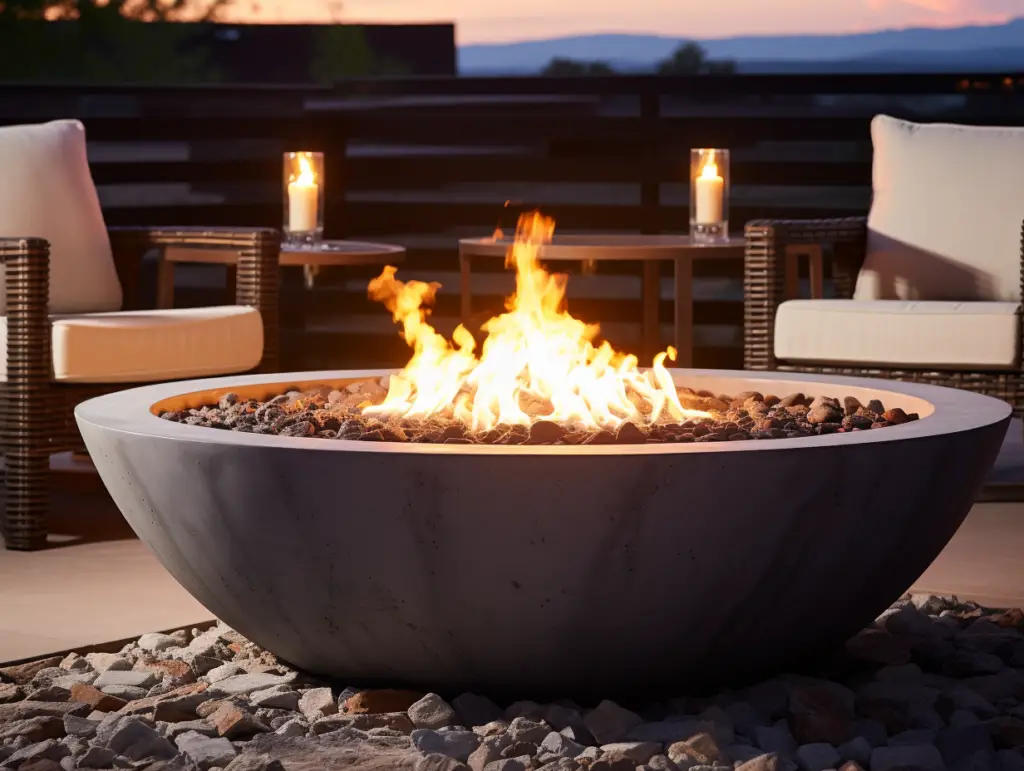
Key Takeaways
- Understanding BTU is crucial when choosing a fire pit.
- Choosing the right BTU for your fire pit depends on factors such as the size of your outdoor space and the intended use of the fire pit.
- Safety considerations, such as proper ventilation and fuel type, should always be taken into account when selecting a fire pit.
Understanding BTU
BTU stands for British Thermal Unit, which is a unit of measurement used to determine the amount of heat output of a gas fire pit. The higher the BTU rating, the more heat the fire pit will produce. However, it is essential to choose the right BTU level for your fire pit to avoid wasting gas and creating unnecessary heat.
When selecting a fire pit, it is crucial to consider the size of your outdoor space and the intended use of the fire pit. A fire pit with a high BTU rating may be suitable for large outdoor spaces, while a smaller fire pit with a lower BTU rating may be sufficient for smaller patios or decks.
It is also important to note that the BTU rating is not the only factor that determines the heat output of a fire pit. Other factors, such as the design of the fire pit and the type of fuel used, can also affect the heat output.
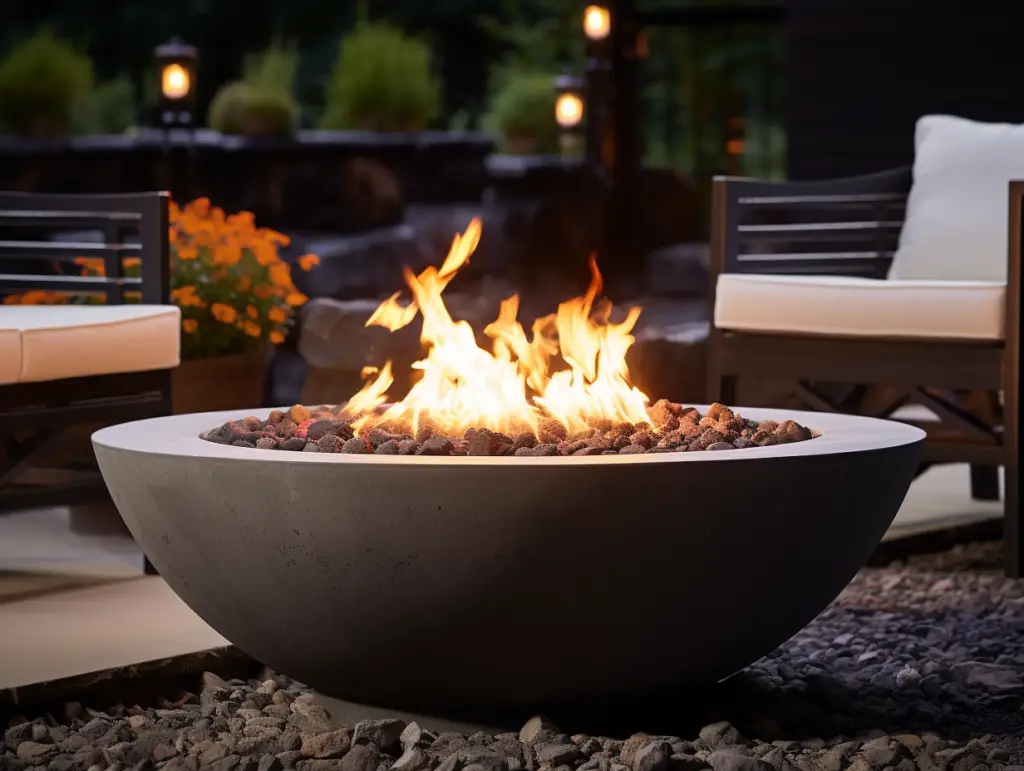
In general, propane fire pits have a higher BTU rating than natural gas fire pits. A standard propane fire pit should feature between 40,000 and 150,000 BTUs worth of thermal energy, while a natural gas fire pit typically has a BTU rating of around 50,000.
It is important to keep in mind that the BTU rating is not the only factor to consider when choosing a fire pit. Other factors, such as the materials used to construct the fire pit, the design, and the size, should also be taken into account when making your selection.
Choosing the Right BTU for Your Fire Pit
When it comes to choosing the right BTU for your fire pit, there are a few things to consider. BTU stands for British Thermal Unit and is a unit of measurement used to determine the heat output of a fire pit. The higher the BTU, the more heat the fire pit will produce.
Size of Your Outdoor Space
The first thing to consider when choosing the right BTU for your fire pit is the size of your outdoor space. A fire pit with a low BTU output, such as 40,000 BTUs, is suitable for small patios or decks. If you have a medium to large patio or deck, then you should choose between 60,000 and 100,000 BTUs. A 150,000-BTU fire pit will work best on a large patio or deck.
Fuel Type
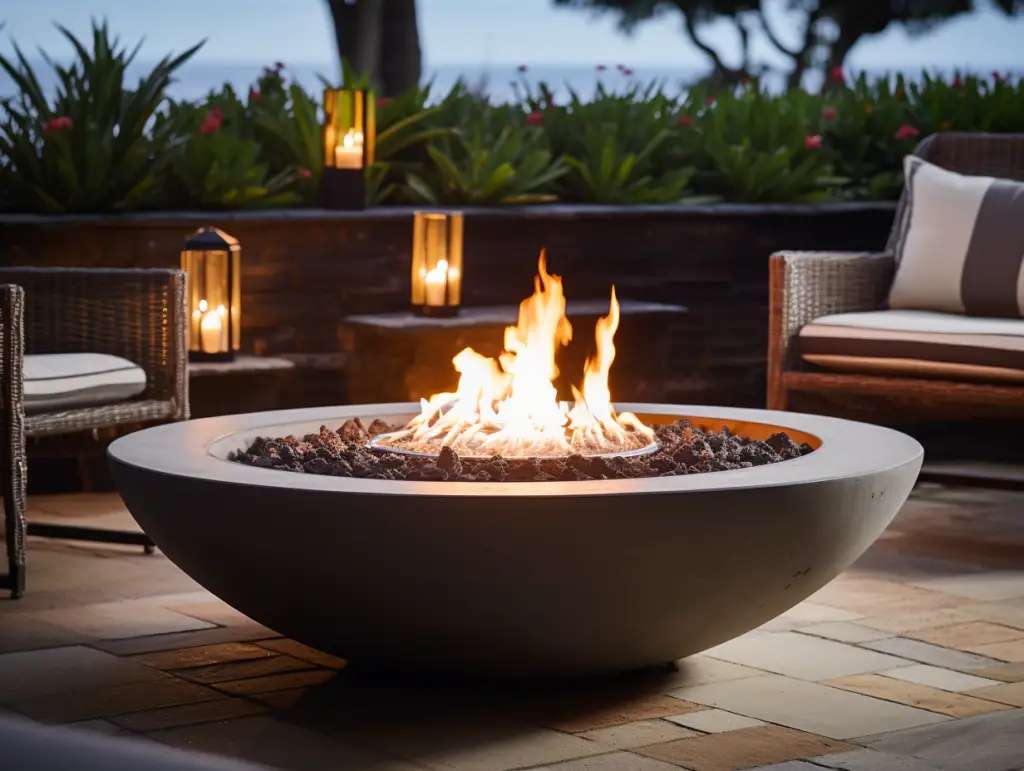
The fuel type you choose will also affect the BTU output of your fire pit. Propane and natural gas are the most common fuel types for fire pits. Propane fire pits tend to have a higher BTU output than natural gas fire pits. A standard propane outdoor fire pit should feature somewhere between 40,000 and 150,000 BTUs worth of thermal energy.
Personal Preferences
It’s important to consider your personal preferences when choosing the right BTU for your fire pit. More BTUs do not necessarily mean a better fire pit. If you have a small space, you don’t want to overwhelm it with a large, flaming pit. On the other hand, if you have a large space and want to create a cozy atmosphere, a higher BTU fire pit may be the right choice for you.
In summary, when choosing the right BTU for your fire pit, consider the size of your outdoor space, the fuel type, and your personal preferences. With the right BTU, your fire pit will provide the perfect amount of warmth and ambiance for your outdoor gatherings.
Factors Influencing BTU Requirement
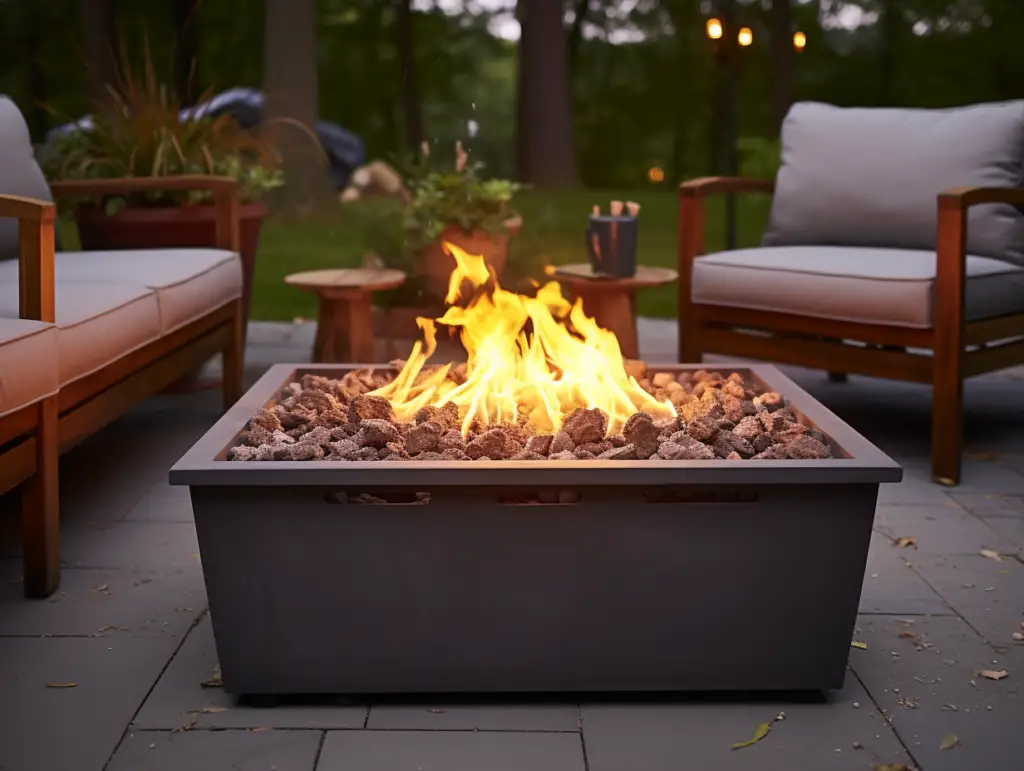
When choosing the appropriate BTU rating for your fire pit, there are several factors to consider. Here are some of the most important factors that influence the BTU requirement for your fire pit.
Size of the Fire Pit
The size of your fire pit is one of the most important factors to consider when choosing the appropriate BTU rating. The larger the fire pit, the more BTUs it will require to produce the desired amount of heat. A small fire pit with a diameter of 3 feet may only require 40,000 BTUs, while a larger fire pit with a diameter of 6 feet may require up to 150,000 BTUs.
Outdoor Temperature
The outdoor temperature is another important factor that affects the BTU requirement for your fire pit. If you live in a colder climate, you will need a higher BTU rating to produce the desired amount of heat. Conversely, if you live in a warmer climate, you may need a lower BTU rating.
Wind Conditions
Wind can have a significant impact on the amount of heat produced by your fire pit. Windy conditions can cause the heat to dissipate more quickly, which means you will need a higher BTU rating to compensate. If your fire pit is located in a windy area, you may need to choose a higher BTU rating than you would for a similar fire pit in a sheltered area.
Material of the Fire Pit
The material of your fire pit can also affect the BTU requirement. Metal fire pits tend to radiate heat more efficiently than stone or concrete fire pits, which means you may need a lower BTU rating for a metal fire pit than you would for a stone or concrete fire pit. Additionally, the type of fuel you use can also affect the BTU requirement. Gas fire pits typically require fewer BTUs than wood-burning fire pits.
Considering these factors will help you choose the appropriate BTU rating for your fire pit, ensuring that you can enjoy a comfortable and cozy outdoor space.
Types of Fire Pits and Their BTU Requirements
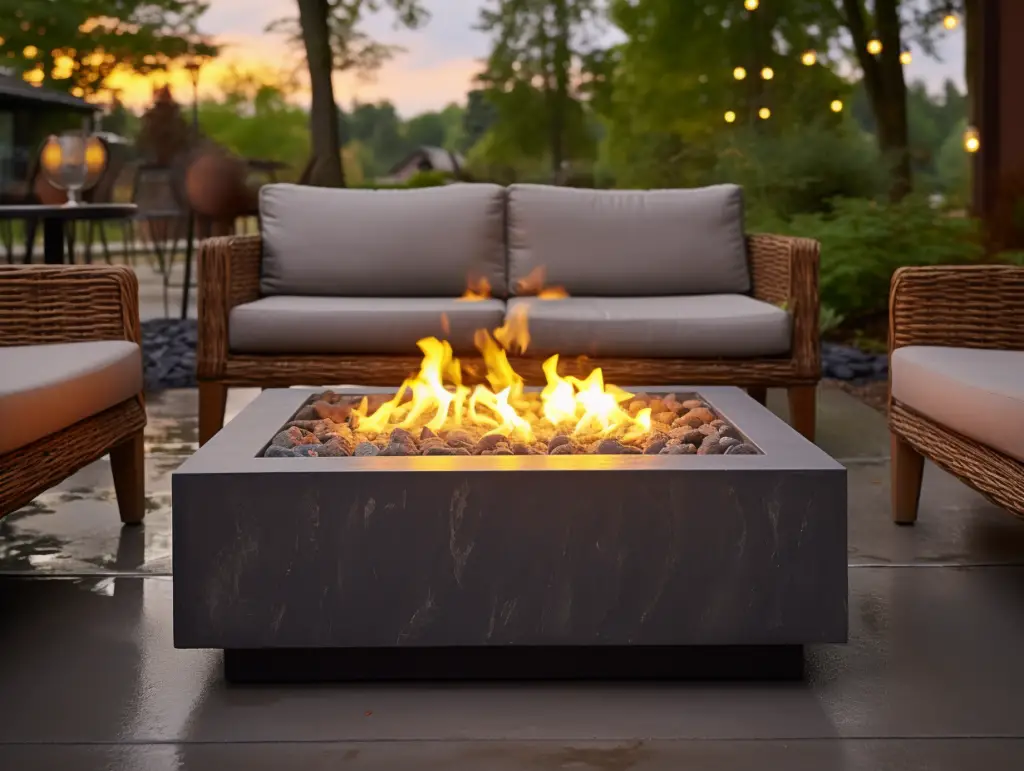
When it comes to fire pits, there are three main types: propane, natural gas, and wood burning. Each type has its own BTU requirements based on the size and intended use of the fire pit.
Propane Fire Pits
Propane fire pits are a popular choice for outdoor spaces because they are easy to use and require minimal cleanup. They are also portable, which makes them a great option for camping or tailgating.
The BTU requirements for propane fire pits range from 30,000 to 100,000 BTUs, depending on the size of the fire pit and the intended use. For example, a small propane fire pit that is designed for use on a small patio or deck may only require 30,000 BTUs, while a larger fire pit that is designed for use in a larger outdoor space may require up to 100,000 BTUs.
Natural Gas Fire Pits
Natural gas fire pits are a great option for those who want a permanent fire pit in their outdoor space. They are connected to a natural gas line, which means they do not require propane tanks or refills.
The BTU requirements for natural gas fire pits range from 40,000 to 150,000 BTUs, depending on the size of the fire pit and the intended use. A small natural gas fire pit that is designed for use on a small patio or deck may only require 40,000 BTUs, while a larger fire pit that is designed for use in a larger outdoor space may require up to 150,000 BTUs.
Wood Burning Fire Pits
Wood burning fire pits are a great option for those who want a traditional fire pit experience. They are also a more affordable option compared to propane and natural gas fire pits.
The BTU requirements for wood burning fire pits are difficult to determine because they depend on the type of wood being burned and the size of the fire pit. However, it is important to note that wood burning fire pits generally produce less heat compared to propane and natural gas fire pits.
In conclusion, the BTU requirements for fire pits vary depending on the type of fire pit and the intended use. When choosing a fire pit, it is important to consider the size of the outdoor space, the intended use, and the type of fuel that will be used.
Safety Considerations
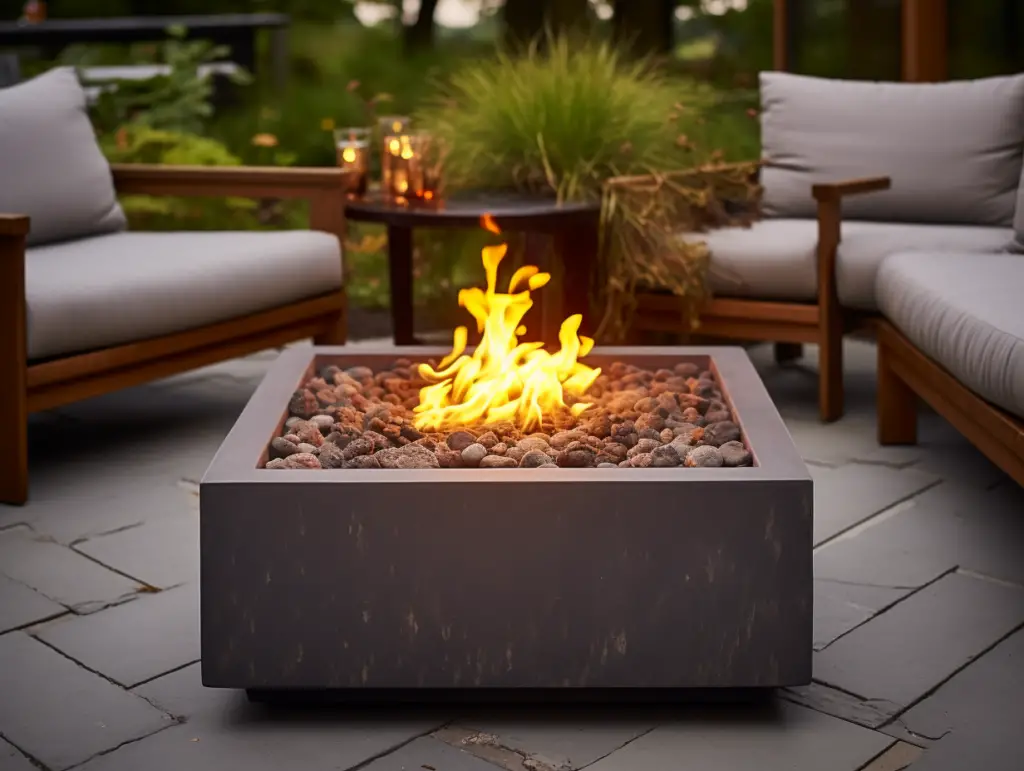
When it comes to fire pits, safety should always be a top priority. Here are some important safety considerations to keep in mind:
- Location: Choose a location for your fire pit that is away from any flammable materials, such as trees, bushes, and buildings. A clear space of at least 10 feet around the fire pit is recommended.
- Surface: Make sure the fire pit is placed on a non-flammable surface, such as concrete or brick. Avoid placing it on grass or a wooden deck.
- Wind conditions: Always check the wind conditions before lighting a fire in your pit. If it’s too windy, the flames could spread quickly and become dangerous.
- Fire extinguisher: Keep a fire extinguisher nearby in case of an emergency. Make sure you know how to use it before you need it.
- Supervision: Never leave a fire pit unattended. Children and pets should be supervised at all times when around the fire pit.
- Fuel: Only use the recommended fuel for your fire pit. Using the wrong type of fuel can be dangerous and cause the fire to spread quickly.
- Exhaust: Make sure the fire pit has proper ventilation to avoid the buildup of harmful gases. Never use a fire pit indoors or in an enclosed space.
By following these safety considerations, you can enjoy your fire pit while keeping yourself and your loved ones safe.
Conclusion
Choosing the right BTU output for your fire pit is crucial to ensure that you get the perfect amount of heat for your outdoor space. As we have seen, the ideal BTU range for most fire pits is between 40,000 and 150,000 BTUs. However, the exact BTU output that you need will depend on the size of your outdoor space and your personal preferences.
When selecting a fire pit, it’s important to consider the fuel type that you will be using. Gas fire pits can be fueled by natural gas or liquid propane, while wood-burning fire pits require wood as fuel. The choice of fuel type will not affect the burner itself, but rather the delivery system connecting the source of fuel and the burner.
Factors such as the size of your fire pit and the fuel type you use will affect the BTU rating you need. A 30,000 BTU fire pit is suitable for a small patio or deck, while a 100,000 BTU fire pit can warm a large outdoor area.
In summary, when choosing a fire pit, consider the size of your outdoor space and your personal preferences. Aim for a BTU output between 40,000 and 150,000 BTUs, and ensure that you select the appropriate fuel type for your fire pit. With these considerations in mind, you can select the perfect fire pit for your outdoor space and enjoy cozy evenings with family and friends.
Frequently Asked Questions
What is the ideal BTU range for a fire pit?
The ideal BTU range for a fire pit depends on the size of the pit and the area you want to keep warm. As a general rule, a fire pit with a BTU rating of 40,000 to 60,000 is suitable for most residential settings. However, larger fire pits may require higher BTU ratings.
How does the BTU rating affect the performance of a fire pit?
The BTU rating of a fire pit determines the amount of heat it can produce. A higher BTU rating means that the fire pit will generate more heat, which can be useful for larger areas or colder climates. However, it also means that the fire pit will consume more fuel and may be more expensive to operate.
What is the difference between a 65,000 BTU fire pit and a 125,000 BTU fire pit?
The main difference between a 65,000 BTU fire pit and a 125,000 BTU fire pit is the amount of heat they can produce. A 125,000 BTU fire pit will generate more heat than a 65,000 BTU fire pit, which can be useful for larger areas or colder climates. However, it will also consume more fuel and may be more expensive to operate.
What factors should be considered when choosing the BTU rating for a fire pit?
When choosing the BTU rating for a fire pit, several factors should be considered, including the size of the pit, the area you want to keep warm, the type of fuel used, and the climate in your area. It’s also important to consider the cost of fuel and the operating expenses associated with higher BTU ratings.
Is a 90,000 BTU fire pit too powerful for residential use?
A 90,000 BTU fire pit is not too powerful for residential use, but it may generate more heat than necessary for smaller areas. It’s important to choose a fire pit with a BTU rating that is appropriate for the size of the area you want to keep warm.
How long can a standard propane tank last on a 150,000 BTU fire pit?
The length of time a standard propane tank will last on a 150,000 BTU fire pit depends on the size of the tank and the rate of consumption. On average, a standard 20-pound propane tank will last for around 8-10 hours on a 150,000 BTU fire pit. However, it’s important to monitor the fuel level and have a spare tank on hand to avoid running out of fuel.

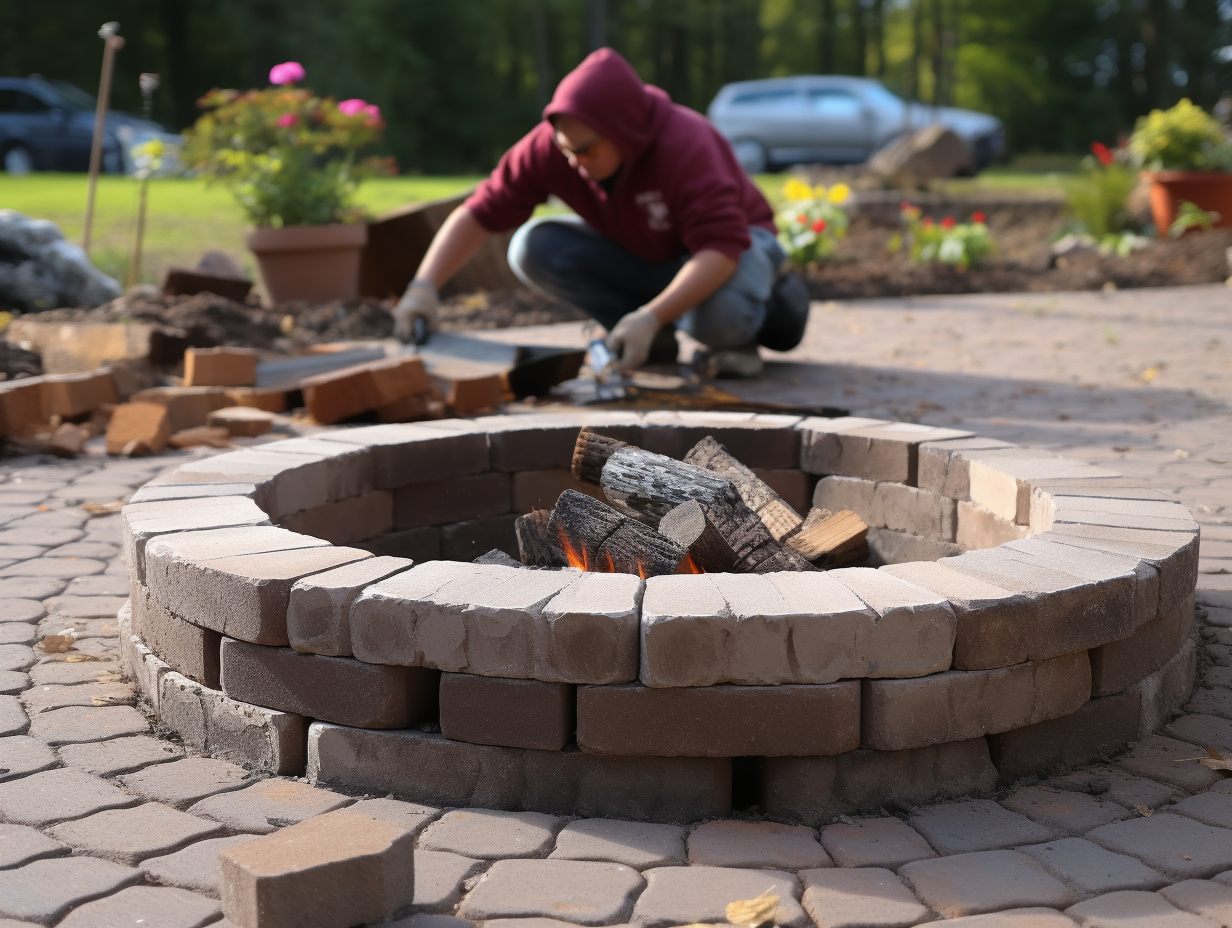

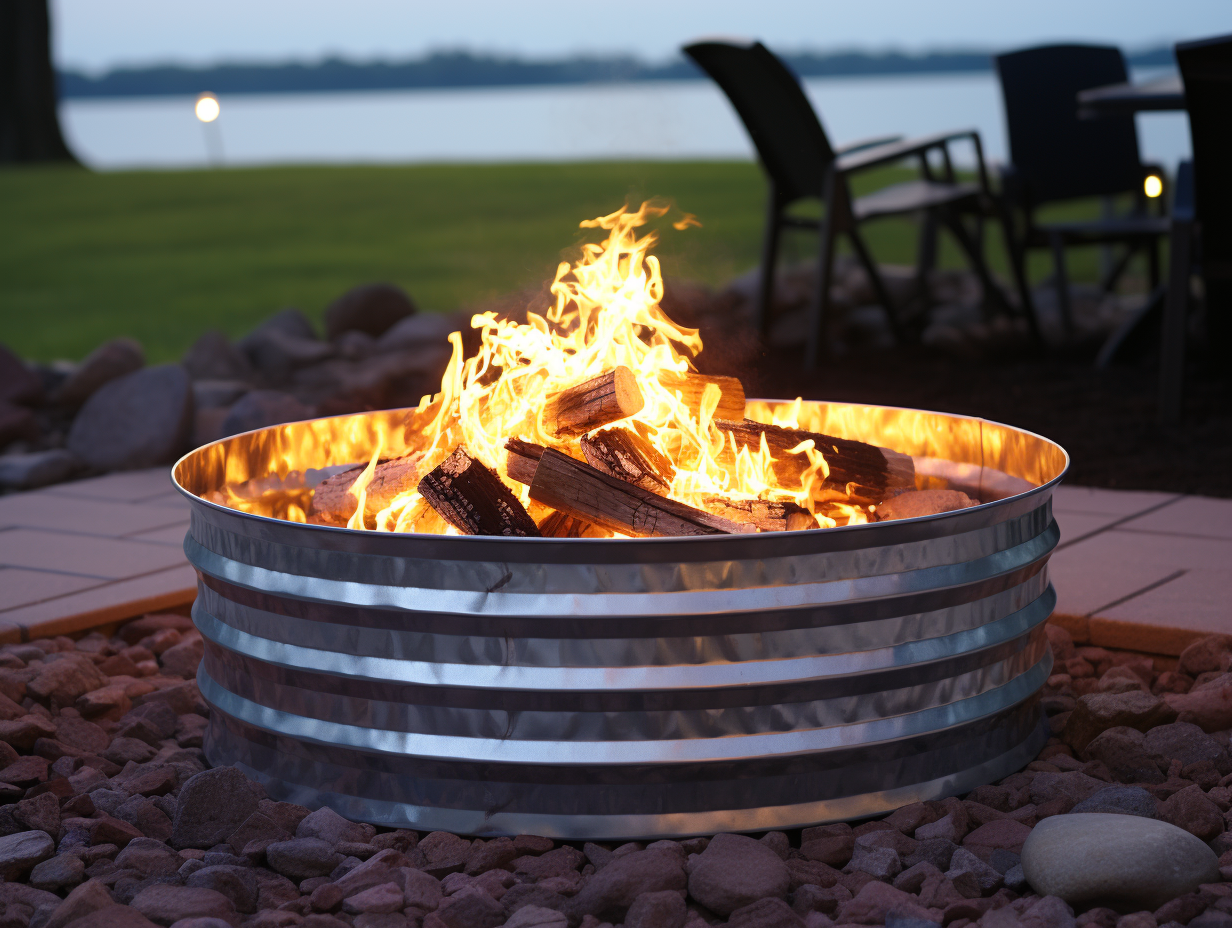

Leave a Reply